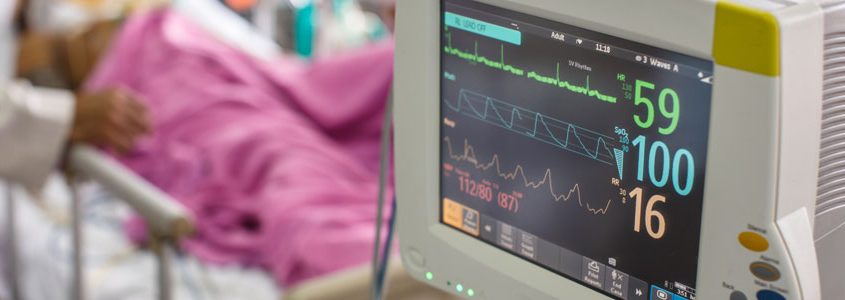Today, Dr. David Fajgenbaum celebrates being in remission for ten and a half years from the rare Castleman disease. LDA Research’s director Lucy Doorbar talks to him about how he discovered a treatment for his disease, and the importance for pharmaceutical companies to understand the patient experience.
LDA Research, a medical market research company specialising in providing global intelligence in the pharmaceutical industry, specialises in rare disease patients. ‘We set up a patient group called the Rare Disease Network that runs through Facebook,’ said Lucy. ‘It is for rare disease patients to connect with each other and share their stories. There are so many rare diseases, but there are a lot of common threads.’
She first became involved in rare diseases following her connection with a local charity Hope for Hollie and the Niemann-Pick Disease Group. And it was here she saw first-hand how challenging it can be to get a diagnosis, the need to become an expert in your condition due to lack of information and interest in diseases that only affect a small community, and feelings of isolation and not knowing who to talk to.
Dr. David Fajgenbaum MD, MBA, MSc, a former Division I college quarterback and state-champion weight lifter, grew up in Raleigh, North Carolina. He was a third-year medical student at Georgetown University, Washington, D.C, when he fell dangerously ill, and realised after being read his last rites, that he was going to have to find his own treatment if he was going to survive.
In 2010 he was diagnosed with Castleman disease, a rare disease where your immune system attacks and shuts down your vital organs, and nearly died on five occasions.
In the fight of his life, he worked with his family, friends and doctors to discover a treatment that would put his subtype of Castleman disease (iMCD) into remission, buying time to research and advocate so that he could help other sufferers of this rare condition.
From his hospital bed he began to study his charts and request his own blood tests. While researching all the data available on his condition, he discovered that he was the fifth case ever according to the UpToDate page on Castleman disease at the time, with a devastating prognosis.
David found inaccuracies while researching and said, ‘I am now the author of the UpToDate page on Castleman disease, so I can tell you that it is up to date. We now know that there are an estimated six to seven thousand individuals diagnosed with Castleman disease each year in the United States, which makes this disease about as common as ALS.’
He also discovered there was not a unique International Classification of Diseases (ICD) code to identify and track cases of Castleman disease, more than half a century after Benjamin Castleman had first observed a pattern of microscopic irregularities in lymph nodes in 1954. ‘So even when doctors diagnosed Castleman disease patients, there was no way to identify them for future research and for the wider medical community to better understand,’ he said.
He reached out to other patients with Castleman disease, as well as physicians, and planned to crowdsource research questions and recruit world-class researchers to tackle them. This new approach to collaborative scientific inquiry has now become a blueprint for advanced rare disease research.
David re-examined the overlooked signs of his Castleman disease, the blood moles on his skin, recalled his medical history of excessive bleeding, and realised that this wasn’t a lymph node problem after all but about his immune system attacking itself.
He became both scientist and subject while continuing to suffer dramatic setbacks. He said, ‘The experience of being in overtime, is surprisingly one of intense awareness and scrutiny. And clarity. When there are only a few seconds left on the board, all distractions disappear and the purpose – victory- becomes clear. The present is only the things around you, and overtime is all present. Nothing but present and purpose. Overtime is going back on the field even though you’re exhausted.’
He discovered a new use for the existing drug Sirolimus, that was approved for treating organ transplant rejection, but had never previously been used to treat Castleman disease.
‘Once I started using Sirolimus on myself and it was working, I realised this drug had always been there and no one was using it to treat my disease. How many more drugs are there on pharmacy shelves that could help patients but are not being used? I joined the faculty at the Penn Institute where I run a center focussed on Castleman disease. Here we discovered other drugs that could be utilised for Castleman patients, and then we started focussing on other conditions. We found different treatments for POEMS Syndrome among others. With all this in mind, and the fact that I am alive because of a re-purposed drug and we’ve been able to help other people with re-purposed drugs, that was when we decided to start a non profit organisation called Every Cure. We realised the reason this wasn’t already happening was because there were some major systemic barriers, that were preventing re-purposing from happening on its own, so we thought of non profit to address each of these areas.’
David went on to co-found and is the executive director of the Castleman Disease Collaborative Network (CDCN) and an NIH-funded physician-scientist; and the nonprofit organization Every Cure, which is leveraging AI to unlock the full potential of every drug to treat every disease it possibly can; and offers guidance to all rare disease patients.
‘We’ve built an amazing team. I co-founded Every Cure with Grant Mitchell and Tracey Sikora. Grant and I were room mates at medical and business school. It’s only recently we’ve had the resources and funding to grow at the rate we needed to. So now we’re up to around 25 team members, and also have some amazing partners, groups like Chan Zuckerberg, Lyda Hill Philanthropies and now the US government are our major partner and funders.’
He recently shared advice for overcoming challenges as a patient physician on his Every Cure social media page. ‘Define a clear vision. Take it one step at a time. Lean on the people you love.’ When he was struggling to get diagnosed and treated for his rare disease, he knew the medical system, and his father had worked as a doctor, but he discovered that there was very little information to work with then. Today he speaks about the importance of storytelling and shared experiences.
Lucy said that from the very start of her time working in hospital, social research and through to her work now with her own company, she has learnt the power and value of listening to real lived experience in order to provide better products and services for people. ‘I feel strongly about giving people a voice, and through our work with the Rare Disease Network and our podcasts Rare Together, it has been very rewarding and humbling to be able to hear and share the voices of people who have incredible challenges to overcome. The rare disease community is a group with very specific needs for support and I am passionate to develop our support with this community.’
When discussing these common shared experiences, David said, ‘I think that all of us with rare diseases feel alone and that there aren’t others dealing with the same things as us, but it turns out that there are a lot of us when you put us together. Each rare disease is rare but collectively we are common. We need to connect more with people with our rare disease but also across other rare diseases. I’ve learned a lot from other people’s rare diseases. It’s also worth driving or getting on a plane to see doctors who have expertise.
‘There is also an aspect of feeling that no drug company is going to invest the time and resources needed into our little rare disease, because we’re too small, and maybe it’s not commercially viable. There are a lot of pharmaceutical companies that are really interested in rare diseases and developing them, but it’s a matter of finding the right fit.
‘There are many examples in drug development where a clinical trial may not have met its primary end point, or maybe it did, but it didn’t have a strong adoption because patients weren’t involved in determining what’s meaningful for their disease. I think it’s sometimes easier when it comes from us, the disease group. And the only way to determine if it’s a good fit, is through a lot of communication and spending time together understanding how it works, what are your priorities and goals, and the more time you spend together then you can really understand if it’s a good fit.
‘We are so excited about this opportunity to identify new uses for existing medicines, and we are using AI to come up with the score for the likelihood of every drug that can treat every disease. So all 3,000 drugs, all 22,000 human diseases, it’s about 16 million computations that our algorithms run. And we are excited to utilise these scores to say, ok among all these possibilities of every drug versus every disease, which drug for what disease is the most promising opportunity to help people and then we can move those forward. We’re planning to make these scores available in the next 15-18 months, and so if you’re a rare disease patient, we will be sharing these scores. It would be amazing if there is an opportunity in there that you are excited to partner on. Maybe you are already aware of a drug, and in the same way that Sirolimus is helping me, there is a drug that you are on which is helping you that’s not approved for your disease. Go to everycure.org/insights and you can let us know about how that drug is helping you.’
David continued, ‘I hope that all Castleman disease patients and their loved ones will visit the Castleman Disease Collaborative Network website to learn more about the disease, opportunities to connect with other patients, and ways to contribute samples and data to the fight at www.CDCN.org.’
And as he pushes forward with advanced rare disease research he said, ‘If you are a rare disease patient looking for guidance, please email Every Cure [email protected].’ LDA Research will be sharing Every Cure’s details on our Rare Disease Network Facebook page so that our community can access and share information.
Now, in remission for more than a decade, David lives in Philadelphia, with his wife, Caitlin, and two children.
David said that, ‘Surprisingly, living in overtime liberated me to be my best self.’
_____________________________________________________________________________________________________________________
Among his many accolades: David was the founding director of the Center for Cytokine Storm Treatment & Laboratory; associate director, Patient Impact of the Penn Orphan Disease Center; he was an early recipient of a grant from Uplifting Athletes Young Investigator Draft, presented by CSL Behring. The ‘draft,’ patterned on the NFL draft, awards research funding to early career scientists who are investigating rare diseases. He is one of the youngest individuals to be appointed to the faculty at the Perelman School of Medicine of the University of Pennsylvania; he was one of the youngest people ever elected a fellow of the College of Physicians of Philadelphia; he was one of three recipients – including Vice President Joe Biden – of a 2016 Atlas Award from the World Affairs Council of Philadelphia; and was the winner of the RARE Champion of Hope science award. He is also the bestselling author of ‘Chasing My Cure: A Doctor’s Race to Turn Hope Into Action’, which was recently spotted on President Joe Biden’s desk, top of the stack.




